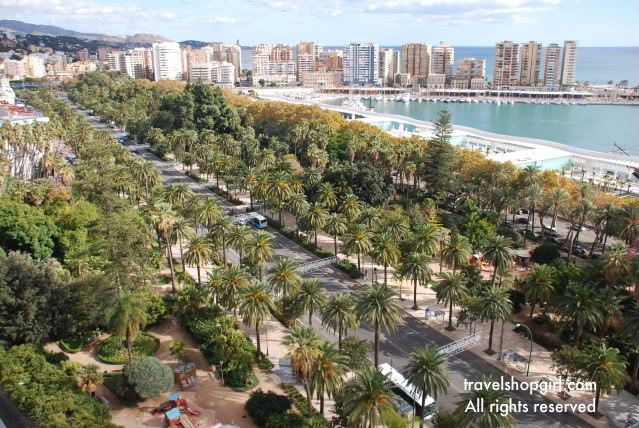
Málaga is the birthplace of Pablo Picasso and Antonio Banderas and home to Alcazaba, the Cathedral of Málaga, and one of the most important harbors in Spain. From the rooftop pool area and restaurant in our hotel, we could see the layout of the city of Málaga Spain and this lush, yet metropolitan city was the ideal city in which to start our cruise.
The climate is Subtropical–Mediterranean with very mild winters and comfortable summers. Málaga enjoys plenty of sunshine throughout the year, with an average of about 300 days of sunshine and only about 50 days with precipitation each year. Its coastal location with winds blowing from the Mediterranean Sea make the heat manageable during the summer. It experiences the warmest winters of any European city with a population over 500,000 and over 100,000 jointly with two other cities in Spain: Almería and Alicante. Average temperature during the day in the period December-January-February is 17.23 °C (63.0 °F). During the winter, the Málaga Mountains (Montes de Málaga) block out the cold weather from north.

Although we would only be in Málaga just over one day, we tried to make the most of it by getting around on foot and checking out a few of the many interesting tourist attractions.
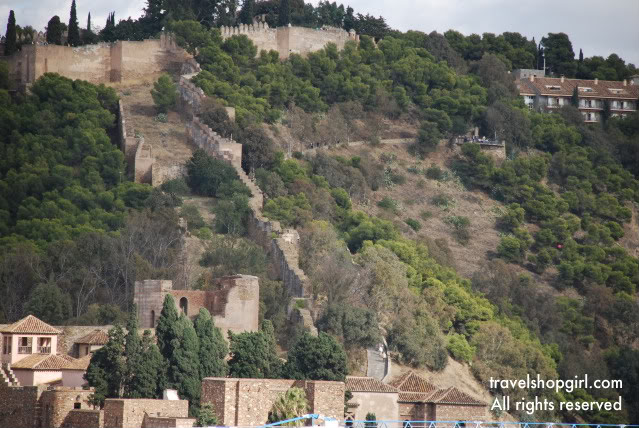
Castillo de Gibralfaro: Although we didn’t get to climb up to the castle, you could see it from almost everywhere in Málaga. At the end of 2005, a thick forest of pine and eucalyptus trees were planted on the hill. On its outskirts are the historical buildings of the seminary and Alcazaba.
The old Muslim castle, known as the Gibralfaro sits on a ridge that overlooks the city of Málaga. This magnificent building dates back to the beginning of the 14th century when it was built by Yusef 1 of Granada on a former Phoenician site and lighthouse from which the castle’s name was derived – gebel-faro (rock of the lighthouse).
The castle is famous for being the site of a three month siege by the citizens of Málaga against the Catholic monarchs, Ferdinand and Isabella. This came to an end only when hunger led to capitulation, after which Ferdinand occupied the site while his queen took up residence in the town. All that remains of this historic monument today is the series of solid ramparts which rise majestically among dense woods of pines and eucalyptus.
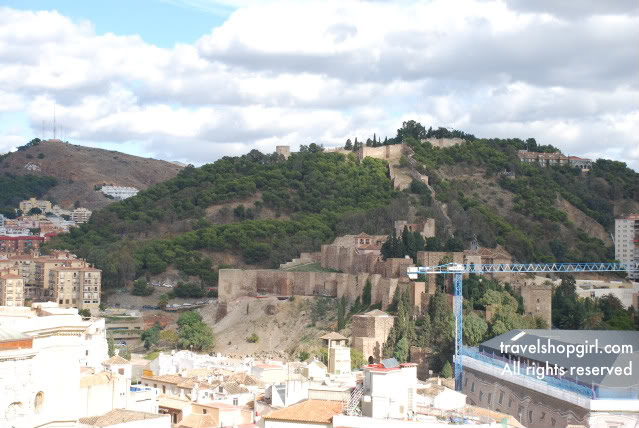
In the second picture above you can see a construction crane next to a building. The building has fabric of some sort over the top and at first we thought we could see the building through it, but then realized that there is a design of a building on it. This explains the wavy lines that you can see, which are not reflected, but part of the fabric.
La Alcazaba: We stumbled upon Alcazaba completely by accident and when we learned that it connected to the Roman Theatre and Castillo de Gibralfaro, we couldn’t believe our luck.
Built from 1040 onwards on a hill dominating the town, the fortress is one of the largest Muslim military buildings preserved in Spain. It formed part of the Arab Malaka defensive system and was linked to the town ramparts, which have now disappeared.
It is made up of a double encircling wall and rectangular towers. From the zigzag access ramp which runs up from the Alcazabilla street, you will appreciate the view over the remains of the brick walls that cling to the hill.
Fortified gates, decorated with columns and Roman capitals, mark the pleasant walk. This maze of gates and nooks makes the long journey even more pleasant.
Having crossed the the Christ Arch, where the first mass after the reconquest was celebrated, you will reach the Arab gardens with marvellous alleys bordered by bougainvillea, jasmine and honeysuckle.
From the top of the walls, do not miss the very attractive view over the town and the port. Finally, make the most of your visit to the fortress by going to the archaeological Museum, the Roman Theatre and the Gibralfaro Castle.
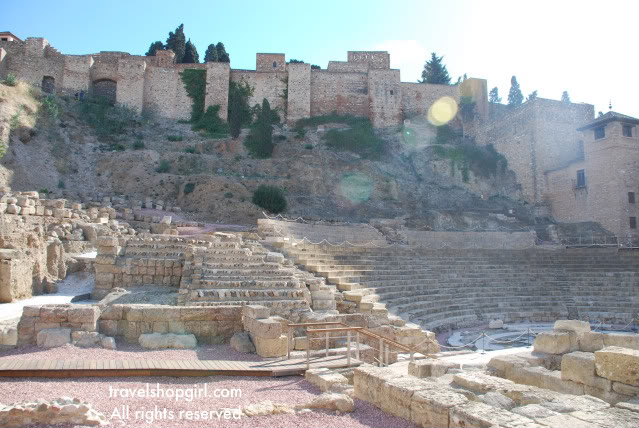
Here is a picture of Alcazaba with the Roman Theatre in the foreground.
Roman Theatre: A relatively recent discovery, the Roman Theatre is one of those sites that never quite looks the same in pictures as in person although I tried to relay its beauty, especially at night.
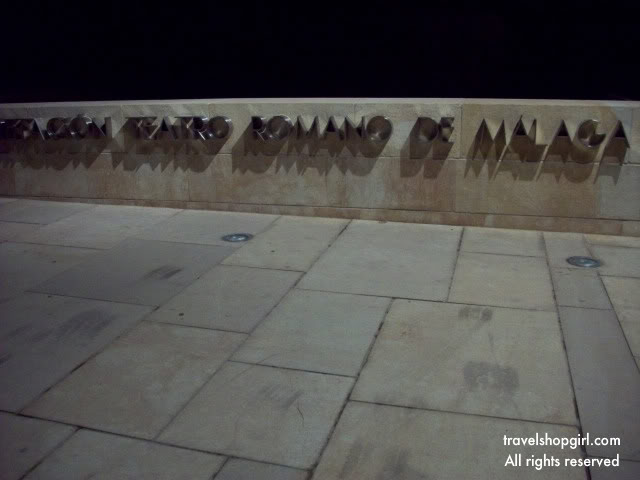
Next to The Alcazaba, which is the lower fortress of Gibralfaro castle, lies The Roman Theatre. There is no entrance fee to The Roman Theatre and you are free to visit whereas there is an entrance fee to both parts of the castle. The theatre was not discovered until 1951 in spite of its size with a radius of 31 meters and height of 19 meters. Studies have shown that it hasn’t been used since the 3rd century and that the Moors used elements from the Theatre in the construction of La Alcazaba.

Plaza de la Merced: Another area that we came across while walking was Plaza de la Merced. As it was a weekday and most people were probably at work, we had the place to ourselves. The pigeons were there as were the elderly feeding them, but surrounding the plaza were several restaurants and cafés, including an unexpected Irish pub.
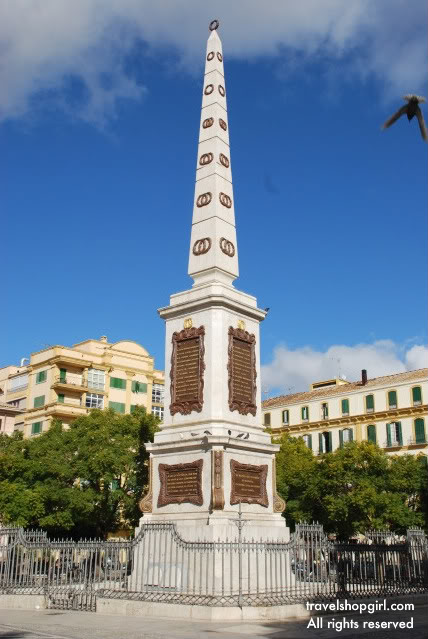
This plaza used to serve as free market and at one point it was actually located outside the city walls. In more modern times, it has served as site for convents and a hospital. King Ferdinand and Queen Isabela entered the city through this plaza after the Reconquest of Spain in the 15th century. However, Plaza de La Merced had to wait until the 19th century to take on its current appearance. This square represents the cradle of liberties and at the center is an obelisk dedicated to the memory of the liberal general, Torrijos, who was executed on La Térmica beach for defending civil rights. This is also where Picasso was born, and they say that he loved playing with the pigeons here. Nowadays, it’s a cosmopolitan spot, full of sidewalk cafés where people from all over the world meet.
Calle Marqués de Larios: No shopping area anywhere can rival Calle Marqués de Larios and the streets adjacent to this pedestrian shopping area. This is the place to shop and be seen and what completes it is the marble pavements. A bonus to us was that the Christmas decorations were up when we arrived and they looked even better at night.
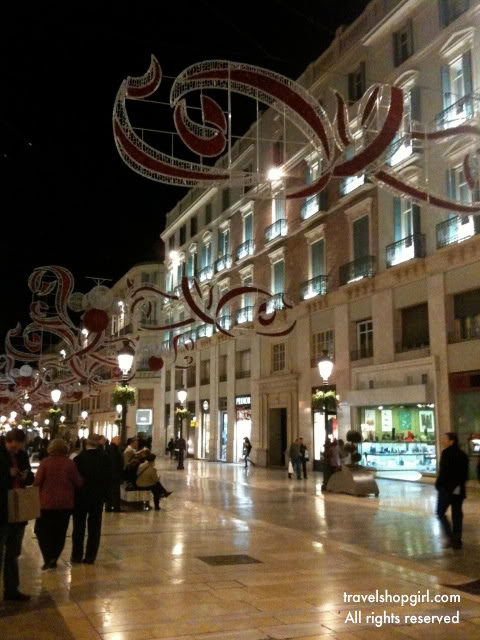
Head for the city’s shopping heart: Málaga’s swanky shopping street, Marqués de Larios is traffic-free and luxurious with glossy marble pavements, expensive shops, cafés, and restaurants. Calle Larios is one of the most famous streets in Spain and the buildings beside it have some of the highest rents in Spain. It is the best place to promenade in Málaga and one of the most visited by tourists. It is one of the most attractive streets in Spain.
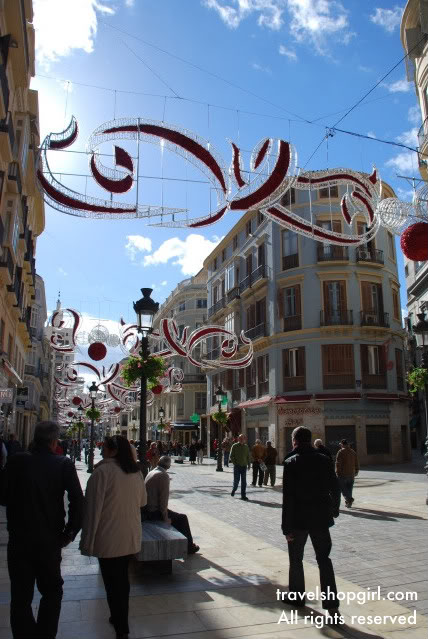

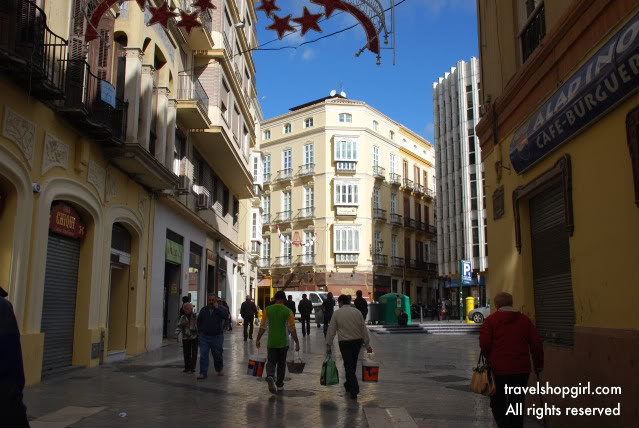
Next time we will talk food or more specifically, tapas.



